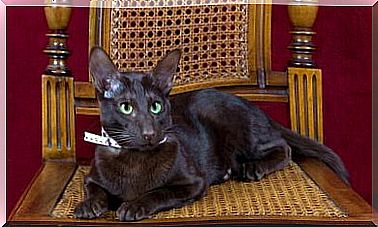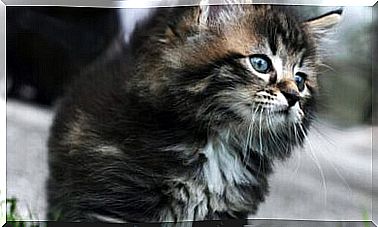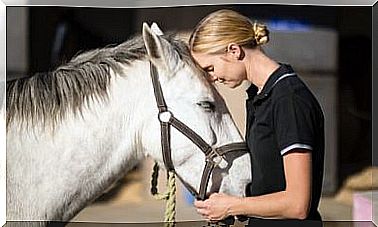Chinese Water Dragon: How To Take Care
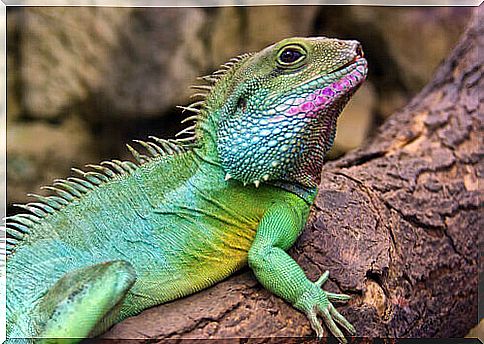
The Chinese water dragon ( Physignathus cocincinus ) is an exotic pet very similar to the green iguana ( Iguana iguana ) due to its aquatic habits. Although it is easy to breed them in captivity, many water dragons are still forcibly taken from their natural habitat.
This reptile requires very specific care and hopefully can live for around 16 years. Before acquiring a specimen of the species, it is necessary to fully understand all its needs, which can be more complex than it seems at first glance. Let’s learn how to take care of this fascinating animal by reading this article.
Considerations on exotic animals
The Chinese water dragon is not protected by the CITES convention, due to the lack of data this organism needs to classify a species. However, according to the International Union for Conservation of Nature (IUCN) the water dragon is a vulnerable species.
Since ancient times, this animal has served as a food source in many regions of China. In recent years, many specimens have been removed from their natural habitat to be sold in Vietnam and even Europe.
Despite the fact that these reptiles are easy to breed in captivity, many people continue to promote their illegal or legal capture and subsequent sale. Likewise, they are also hunted for their skin.
Captive-bred and imported animals can be found in the pet market of Western countries. For this reason, it is necessary to ensure that the acquired animal was born in controlled facilities.
A wild animal does not easily adapt to living in captivity and can even die. Furthermore, these specimens usually carry a high load of pathogens that can be transmitted to humans and other animals. Not to mention that buying a wild animal encourages the illegal – or legal but unethical – trade in exotic animals.
On the other hand, in order to properly care for this pet, it is necessary to have a lot of space, as it requires a large enclosure that includes a swimming pool. If it is not possible to offer him this and many other things, it is better to opt for other less demanding reptiles.
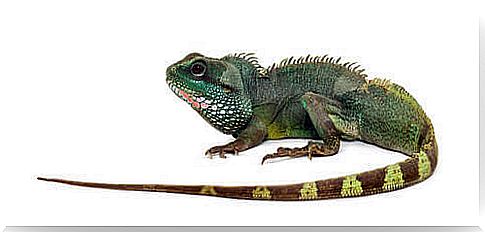
The Chinese water dragon in captivity
The Chinese water dragon is a very sociable reptile that thrives best when in the company of its fellows. Hence, it is best to house reptiles in pairs or in small groups. This will not make care more difficult, nor will it increase maintenance costs.
The terrarium
An adult specimen can reach more than 80 centimeters in length, making them very large animals. To house a specimen or a pair, the indicated size of the terrarium is 1.8 x 0.9 x 1.5 meters. This is a very large enclosure and is unlikely to be found in stores. So it will have to be made to measure, which assumes a high cost.
To add more than one specimen to the terrarium there are several options. First, you could adopt a couple, as long as you know for sure that they are a boy and a girl. Conversely, hosting 2 males or 2 females together can cause territorial problems, unless the terrarium is very large.
As for the substrate, it must be placed one that does not hurt it if it is ingested. You could use sterilized potting soil mixed with peat moss, coir and sand. On it you will have to deposit a layer of moss, which retains humidity, which is very important for these animals.
In addition, there should be a large number of branches, logs and rocks in the terrarium. Don’t forget that they are very active animals and will spend the day moving around the terrarium, both on the ground and on the branches. It is also a good idea to place some natural greenery to enrich the enclosure.
Finally, a swimming pool in the Chinese water dragon terrarium should never be missing. These animals are good swimmers and, as the name suggests, spend most of the day swimming. This pool must be large enough so that a specimen can submerge half of its body in height. The water must be changed daily.
Environmental conditions
One of the most important factors in keeping a Chinese water dragon in a terrarium is humidity. This must be kept constant at 80%, so it is important to install a hygrometer.
Another tactic, in addition to always spraying the water inside the terrarium, is to place natural plants. L ‘ Hibiscus and ferns are plants that are very well maintained in very humid environments. They will give a more natural look to the terrarium and help keep the humidity in the room constant.
On the other hand, the optimum temperature range is very strict, between 29 and 31 ºC. These high temperatures cause the environment to dry out quickly, hence the importance of the pool and also of the plants.

In the terrarium there must be a place where the temperature is higher than 32 ° C. To achieve this, a lamp or a heating stone can be placed in one end of the terrarium, so that the other part is cooler, but not too much. Additionally, thermal ribbons and pads can be used to create a gradient from one end of the tank to the other.
Finally, during the night the temperature should gradually drop to 24 ºC. The light-dark period can be set to 12-12 hours and, during the day, a UVA / UVB light should stay on.
What does the Chinese water dragon eat?
The Chinese water dragon is an omnivorous animal, which eats both insects and fruits and vegetables. The arthropods that you can feed him are:
- Crickets.
- Worms.
- Earthworms.
- Grasshoppers.
Adult specimens can also eat small fish and mice. Within their diet, 15% should be made up of fruits and vegetables, but it is good to always feed them more vegetables than fruits.
Adults need to be fed every 2 or 3 days, while juveniles need to eat every day. Both will need vitamin D3 and calcium supplements every 2 days, as well as vitamin and mineral supplements once a week.
Breeding habits
When a Chinese water dragon reaches 50 centimeters in length, it is ready to procreate. A pair of dragons will reproduce easily.
Copulation is aggressive. The male grabs the female by the crest behind her head and drags her to a quiet area. This can happen multiple times in a single day. After that, if copulation was successful, the female will lay an average of 15 eggs.
Before laying eggs, the female will dig a nest around the enclosure to place them. After about 2 hours it will cover the nest with earth and moss. Finally, it will dig as far as possible another day to fool potential predators.
When the eggs hatch, the young must be kept in a pot of warm water overnight. The animal must be able to breathe, so you don’t have to cover it completely.
Subsequently, all the offspring must be relocated to another enclosure with an ambient temperature equal to that of the adults. From now on, and until they are 4 weeks old, they will be fed 3 crickets every day, sprinkled with vitamins and minerals.
Caring for the captive Chinese water dragon is very complicated indeed. If you are not sure if you can strictly meet its needs, it is better not to buy it.





